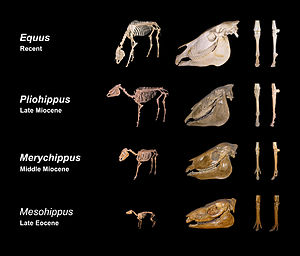http://freescruz.com/~4cygni/horsehead/B33-19thC_4.htm wrote:
The Horsehead Project:
19th Century Study of Bright and Dark Nebulae
Stephen R. Waldee (c) 1990-2012
<<Mrs. Williamina Paton Fleming (1857-1911) came to Massachusetts from her native Scotland in 1878 and went to work early the following year in the household of Dr. Edward C. Pickering -- as his second maid! Impressed with her accuracy and persistence, Director Pickering hired Mrs. Fleming to work part-time at the Observatory in 1879, and from 1881 until the year of her death she was a staff member, a very good example of one of the early unsung women the male-dominated world of astronomy.
Beginning on June 27, 1888, Mrs. Fleming took each of the Orion plates, placed it on an illuminated frame at an angle of 45 degrees, and studied all portions with a magnifying glass to find any suspected nebulae recorded during the exposure. Each object's coordinates were measured, referred to the star chart of the standard Bonner Durchmusterung reference published in 1863, plotted at the same scale as the new Harvard photographs. In the HCO Annals publication a table is given comparing the results of searching through four plates, covering the area, with a fifth plate used to check the results of the others. The "A" rating given to the Zeta Orionis nebula qualified as 'unmistakable' on all the plates taken of the region.
The official discovery plate that registered the Horsehead nebula was number B2312, taken with the Bache telescope in Cambridge on February 6, 1888, with an exposure time of 90 minutes. The HCO logbooks are now online (2012); the cover for Series B is seen here, with the individual pages for the dates February 3 and 6, 1888, visible here; the entry for 2312 is very brief, indicating the area (in right ascension) covered by the plate, and that the sidereal clock rate was employed. By setting up the star chart program 'TheSky' Version 6 for the coordinates of Cambridge and the date of that exposure, the author determined that the star Alnitak, and the nebulae in close proximity, would have transited not long past midnight.
HCO director E. C. Pickering reported the results of the examination and measurements made on this plate by 'Mrs. M. Fleming' (using initial "M" for his preferred diminutive "Mina") in his 1890 paper "Detection of New Nebulae by Photography"; here (below) he describes the careful method of Williamina Fleming in her examination of the negatives to make discoveries of new objects therein:
On B2312, Mrs. Fleming recorded a nebulosity -- listed as No. 21 in her table -- described as follows (bold emphasis added by the present author, to signify the Horsehead's dark cloud): "A large nebulosity extending nearly south from Zeta Orionis for about 60 minutes. More intense and well marked on the following side, with a semicircular indentation 5 minutes in diameter 30 minutes south of Zeta. Good plates of this region show this object, and it has been used here as a test for some time..."
In referring to "this object", it is evident that Pickering means the large 60-minute nebula and not specifically the "semicircular indentation".
The "large nebula" extending south of Zeta was reported by Edward Pickering to Dr. Dreyer for inclusion in his successor to the NGC, the Index Catalogue of 1895; Dreyer's list was ordered by right ascension and thus the object was numerated "IC-434" in the Dreyer's (first) Index Catalogue. The Horsehead nebula, of course, is the "semicircular indentation 5 minutes in diameter" and, as it was described by Mrs. Fleming in Pickering's paper as a detail of nebula no. 434, it was not cited as a separate object at that time, and not included in the IC (indeed, it was not given a 'catalogue number' specifically until Edward Barnard cited it in his 1919 published list of dark markings (no. 33, on the page shown here.)
The British astronomer and compiler "references" Harvard's new nebulae to "Pickering" on the second introductory page, and again, in the individual nebula entries, to HCO's director--not as Pickering had specifically stipulated, to Fleming. Numerous articles consulted by this paper's author, analyzing historic contributions to astronomy by women, have reported what is obviously a consensus view: that it was formerly conventional practice to diminish 'underlings' and attribute their work to their ultimate superiors. Furthermore, women were at a special disadvantage in this era of science: as researcher Steven H. Yaskell observes in his 2005 article "Henrietta Swann Leavitt, the star catcher", included on this web page:
...women did more than replace the largely young male "computers" who performed the routine computations for the daily observations and measurements (and who suffered similar career dead-ends like their female counterparts, and in some cases worse). Some in England became full partners with the hired male staff... The same was true for the woman computers at the Harvard College Observatory. But any sense of a shared social status was missing. Some archives and the inevitable anecdotes suggest that it was very much a "child - to - father" relationship between the women computers and the regular male staff, and particularly, with the director.
However, all analysis of Edward Pickering's attitude and behavior to his 'female underlings' shows that he stood apart from the male- authority- figure- dominated attitudes of his time. In the words of Dr. Gina Hamilton, (University of Southern Maine), "While Pickering published in his own name, he freely gave credit to his researchers...Among the many famous women who worked with Pickering at Harvard were Williamina Fleming (c 1881), who began work on an empirical classification system of spectral types in stars. While engaged in this monumental task, she discovered ten novae, more than three hundred variable stars, and some sixty new nebulae...Fleming's classification system was further refined by Annie Jump Cannon."
A further accounting of Nebulae discovered at the Harvard College Observatory by E. C. Pickering (HCO Annals, Volume 60, 1908) confirms the progressive and collegial attitude of the Observatory's Director. In the table on p. 149 -- online here -- entry No. 62 lists nebula 434 as having been discovered by "W. P. Fleming". We have truncated items 19 through 55 in order to show the relevant section of the page, below:
So, as far as the Harvard College Observatory is concerned, the official discoverer of the nebulosity containing the Horsehead was a woman, and one who been promoted from housemaid to observatory staff member!>>
 The Horsehead Nebula
The Horsehead Nebula





